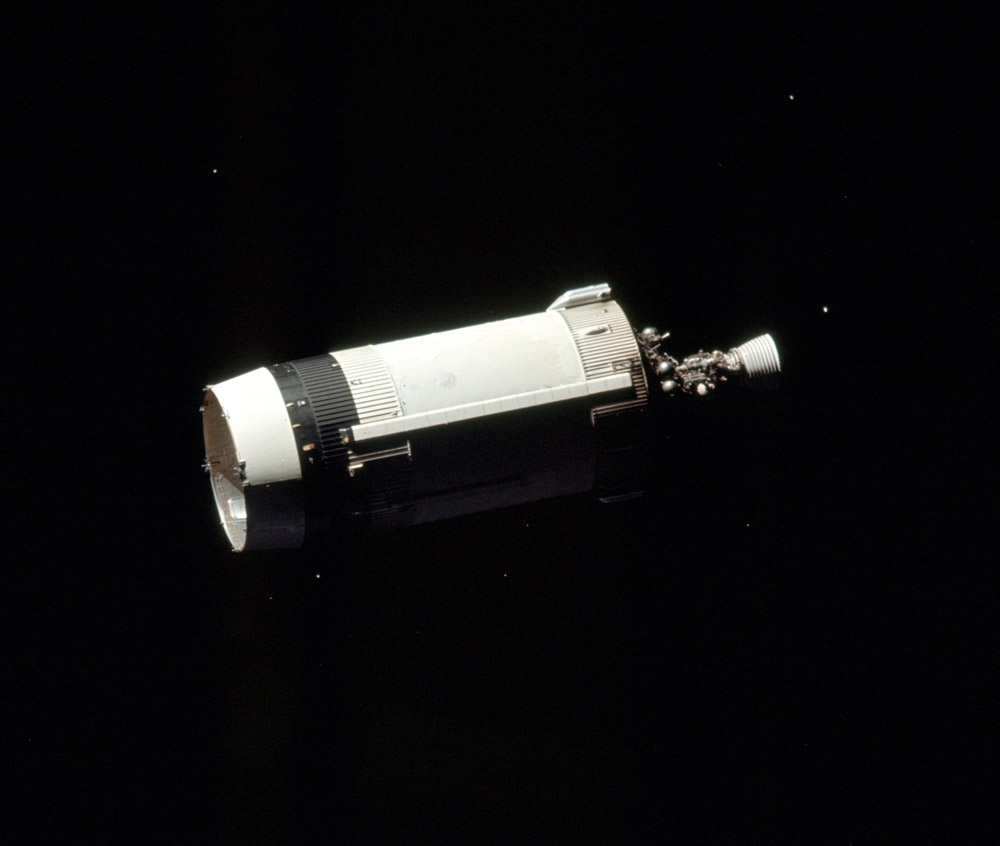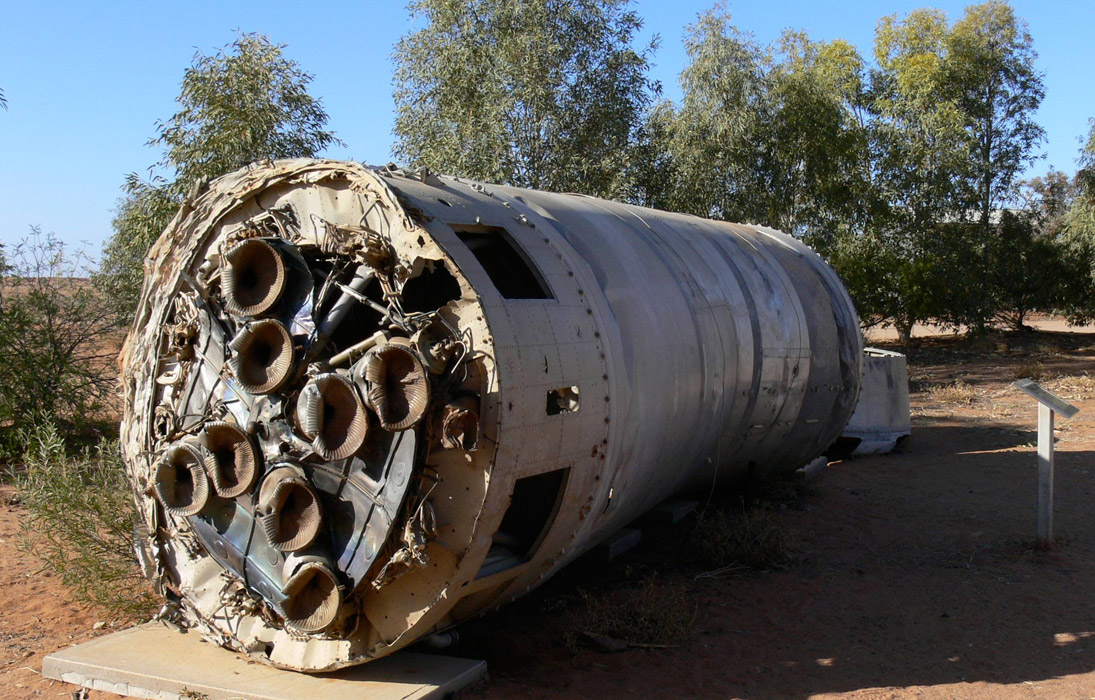Debris Survey
Electrodynamic vehicles show their great potential in LEO survey missions, where the goal is to rendezvous with as many targets of interest as possible. Surveys of debris objects before their removal may be desired or even necessary for planning and safety reasons. Rockets are not particularly efficient at this task, because debris objects are scattered all over LEO, and only a few objects may be realistically reachable in one mission for rockets with typical Isp's. By contrast, electrodynamic vehicles are not limited by the rocket equation, and can produce huge delta-V's sufficient to visit hundreds of objects in one mission.
Rocket bodies, such as shown above, are obvious first candidates for removal from LEO, and it would make sense to prepare for their removal by surveying their current state, including structural integrity, condition of the painted surfaces (flaking), and rotational states. All this information is important for capture planning. Because of their concentration in clusters, removal of the rocket bodies will make a big difference in the future debris environment in LEO by reducing the probability of catastrophic collisions.
There are three major inclination clusters, 82-83°, 71-74°, and Sun-sync, and there is also some altitude clustering, but the nodes of the orbits in each cluster are widely scattered, and any survey vehicle will have to go through a wide range of nodes, rotating its orbital plane by up to 360°. The total delta-V's required for these missions are enormous—between 50 and 75 km/sec—way beyond anything the rockets can do at this time, but it can be achieved with electrodynamic propulsion.
A single electrodynamic vehicle can survey the population of 233 rocket bodies in the altitude range between 600 and 1200 km of the 82-83° inclination cluster in 2.8 years. A survey of 89 rocket bodies in the 71-74° cluster will take 2.4 years, while a survey of 75 rocket bodies in the Sun-sync cluster in the same altitude range will take 2.1 years. Such is the advantage of propellantless propulsion.
 Electrodynamic Technologies
Electrodynamic Technologies

